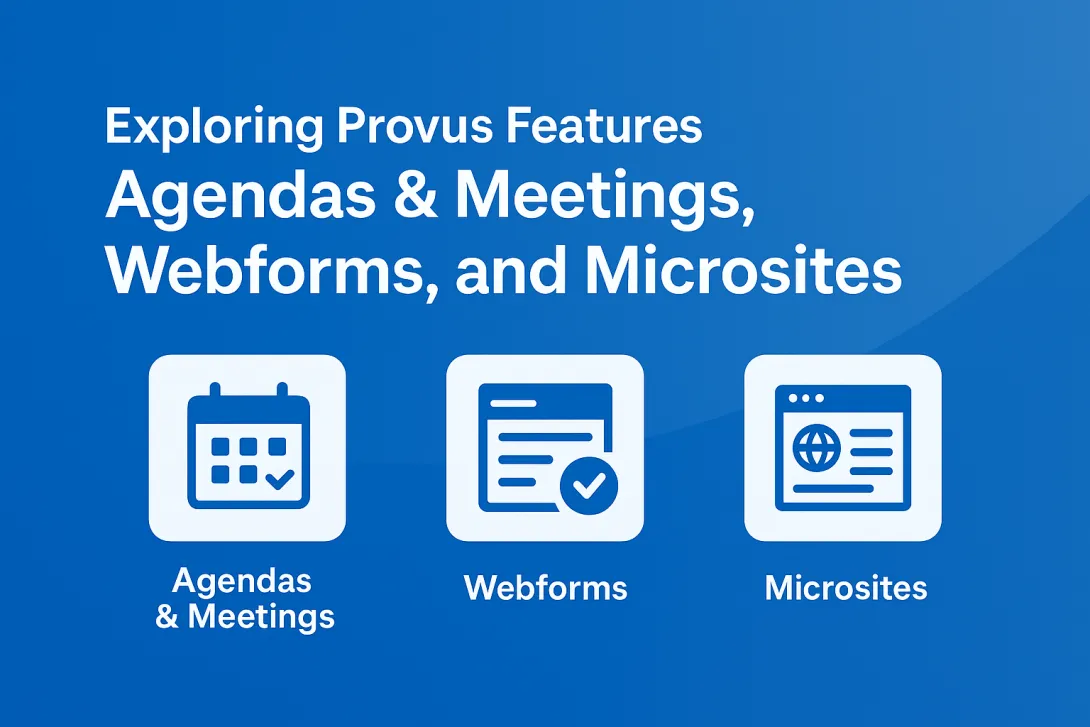Provus® 2.0: Next Gen Drupal Content Editing

Among the Drupal site owners who are experiencing first-hand how easy (and actually, how fun) it can be to make updates and switch up layouts whenever needed, the first generation of Provus® is a rather big deal. The same can be said for developers, for whom component-based design systems are streamlining site builds.
Even though, within the Drupal sphere, Provus® hasn’t reached top-of-mind status yet, the focus over the past few months has been on a new generation for Promet’s open source, drag-and-drop page-building solution for Drupal.
We’re excited about what’s new, but first, a recap of what Provus® is all about.
A New Kind of Content Editor
The introduction of Provus® in 2020 set a new standard and raised the bar for component-based design systems that allow for drag-and-drop content editing.
The essential premise of Provus®: despite differences in content modeling, the pages of most websites consist of various combinations of the same components such as media galleries, lists of content, cards, search, maps, and social media.
With Promet's new approach to component-driven theming, new potential has emerged for customizable content models that are built with easily “themable” and reusable components, that are then stored in a library that serves as an efficient starting point for site builds and a highly flexible framework for content editing.
Traditional vs Component-Based
Traditional Drupal theming includes CSS and JavaScript selectors that are intertwined with their context, connecting them to the backend implementation. The result of this “theme for the page,” approach is assets that can’t be reused across projects.
With a component-based approach, all of the assets including the JS, CSS, and template are grouped together, and isolated within a coherent whole.
Making component-based theming work in Drupal, can simply be a matter of embedding. We are able to leverage Twig’s ability to embed or include templates to render the component. If the backend implementation changes or we want to move it to another project the component itself is not changed.
Sound good?
Absolutely, yes. And recently I was asked why we felt a need to mess with it. Here’s the long and the short of that conversation.
Read: Provus® Frequently Asked Questions
Q: Provus®’s introduction was relatively recent, why was version 2.0 considered necessary at this point?
We moved to using a Drupal distribution model so that we can allow developers to choose which features they would like to leverage and only install those items. Also, you can choose to not install any items and enable as needed.
The distribution model also allows us to push updates as required, it’s easier to support and install.
Q: What are the factors that have driven the evolution of Provus®?
Provus® has evolved as a result of our experience as an agency delivering solutions for our clients. We want to make sure that the authoring experience allows clients to create very robust landing pages and content with tools that facilitate an elevated authoring experience.
We’ve been able to take client feedback and incorporate it into our implementation of layout builder for a next-level content creation experience.
The desire to build Provus® 2.0 emerged out of a need to lower the time to first value from the product. This means the ability to deploy Provus should leverage what Drupal already does.
Read: Provus® Drag and Drop CMS
Q: To what extent is Provus® 2.0 a departure from the platform that Promet introduced in the fall of 2020?
There are three key differentiators:
- We took a step back from Storybook in order to simplify the product and make it easier to support. This is something we will likely revisit but for now we wanted to make sure Provus® 2.0 was a solid and stable distribution upon which to build robust websites.
- Being a distribution and removing the Storybook integration ensured that coming to Provus® with Drupal skills you’ll be ready to go whereas Provus® 1 had a learning curve in regard to the front-end work.
- We also took a modular approach with Provus® 2.0, whereas the first version was a monolithic install in which all features were delivered, and you then had to remove features you didn’t need. Provus® 2.0 installs with a very core Provus® and you can select features to enable either at the time of install or later through the Drupal UI.
Q: While there's crossover between the benefits of Provus® for developers and the benefits for content editors, are Provus® 2.0 benefits more heavily weighted toward one vs. the other?
Our goal with Provus® 2.0 is to maintain the rich content authoring experience coupled with tools that maintain brand compliance while empowering content authors to build rich web pages while simultaneously addressing deployment, onboarding and upgrading issues that we found Provus® 1 to have.
In short, what you love about Provus® 1.0 will still be in Provus® 2.0.
Have a beautiful, easy-to-use website. Request a demo!
Q: On a scale of 1-10 how game-changing are the changes within version 2.0. How and to whom will the difference be most significantly felt?
From an end-user’s perspective, nothing will change. Site builders may notice a slight change in some of the Layout Builder components that have a more simplified user experience.
The biggest difference will be felt by developers and themers. Provus® 2.0 will be much more familiar since it is leveraging Drupal’s core and contributed modules and no longer incorporates Storybook.
Interested in a Provus® demo or in learning more about what Provus® can do for you? Contact us today!
Get our newsletter
Get weekly Drupal and AI technology advancement news, pro tips, ideas, insights, and more.




